Lofoten
# June 29, 2024
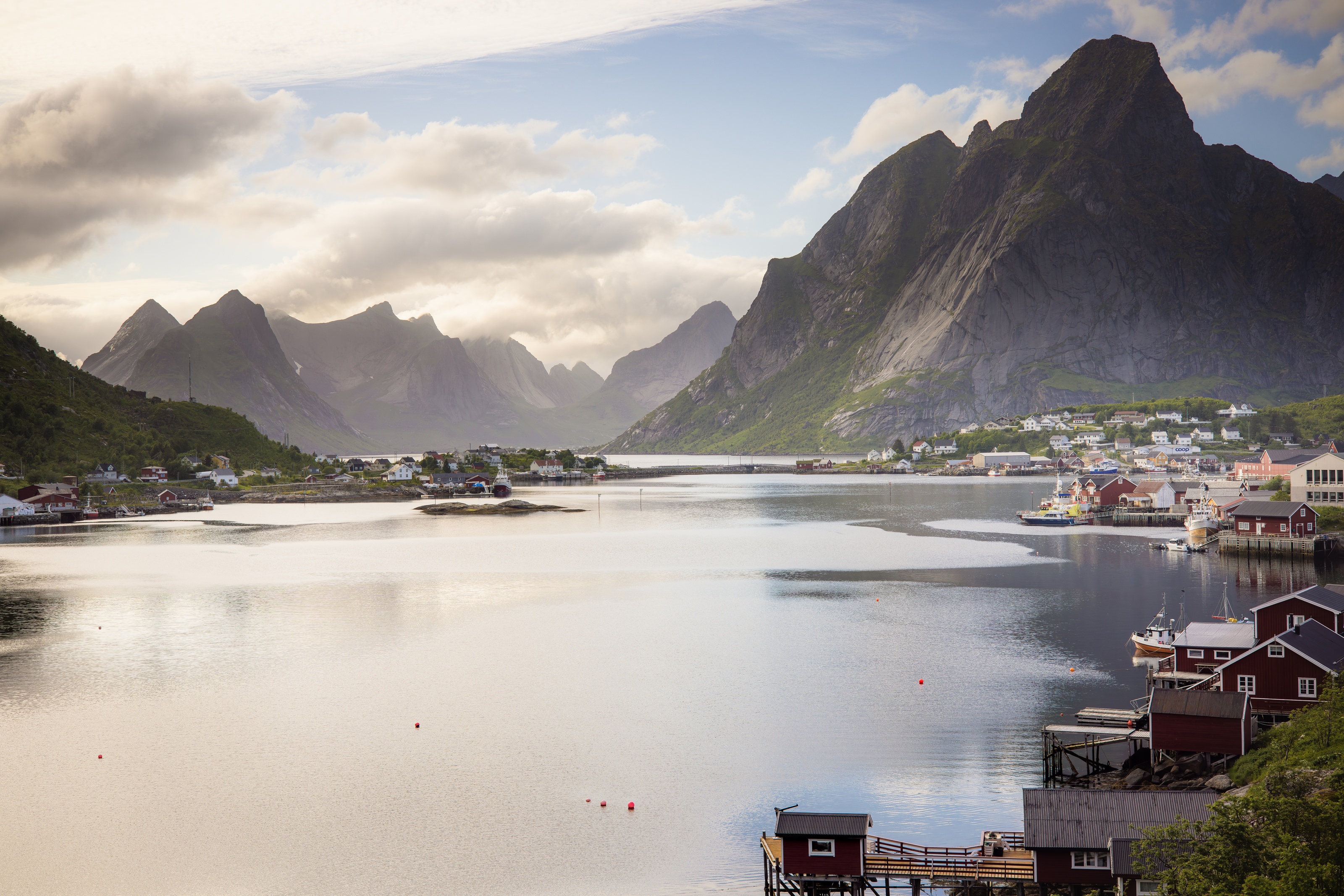
Lofoten is a set of islands at the very northern tip of Norway. All around you are different oceans. West is the Atlantic. North is the Arctic. East is the Baltic and the mainland of Norway.
On land, towering cliffs extend from flat meadows. And green everywhere you look. Trees cling to the mountainside and wildflowers pop in purple and gold from every empty clearing. Sheep stroll along the street on their way to wherever it is that sheep go.
In part because of where it is, and in part because of how hard it is to get there, Lofoten feels like a place isolated from the real world.
Setting the stage

There's not much detailed information on Lofoten in English, which makes it tough to figure out what's exactly going to be in store. If you speak Norwegian apparently you're in better luck. I unfortunately don't.
Lofoten sounds like a place that would be far closer in spirit to Patagonia than Copenhagen, with its focus on the hiking culture and sprawling landscapes. I was expecting small fisherman villages preserved by some combination of nostalgia and tourism. The reality ends up being somewhere closer to the middle of the two places. There are some big towns in Lofoten; all year round people live in the neighborhoods that dot the region. In the winters it becomes a proper center of commerce thanks to the stock fish trade with Italy. Almost anywhere you go on the islands you'll be able to see some scattered homes. For the people who live there, it's just another day among the mountains. That's part of the whole charm - bucolic wild mixed with the legacy of people that have called the region home for the last 11,000 years.
We met people that were in Lofoten for a long weekend and others that have been coming for years. They still haven't exhausted all the scenery, the hikes, and the sea. I was half expecting those repeat travelers to comment on how much things have changed in the last few decades. They simply shrugged: it's about the same - same small roads, same sparse trails. For how modern some things feel (research ships, cellular data, cafes), it's a place that likes to savor its unique tradition.
Geographically Lofoten is a pretty small place. It takes 5 hours to drive from the northern tip to the southern end traveling 60km/hr, but it takes more like 2 hours for the areas that have the most popular hikes and beaches. If you're there for a week I think it's fair to say you can see it all. You won't do it all, but you'll get a solid gauge.
Midnattsol


Perhaps even more than hiking, Lofoten is known for its Midnattsol during the summer months. We happened to be there right after the solstice - when days are at their longest and the season seems to slow down in front of you.
No matter where I am, I always feel a certain nostalgia for the summer. No doubt inherited from getting off school and walking in warm nights as a kid. Lofoten just brings it up another degree.
The islands are so far north, they're technically within the Arctic Circle. Which means not only was it light at all times - the sun never actually set. It just hovered there right on top of the horizon, before slowly making its arc back to the east to start a new day. It's this hovering perhaps more than the light that causes you to double-take. The sun seems to violate some law of physics that we've intuited our whole life: the sun rises (day), and it sets (night). When your expectations bump against the Midnattsol reality, you can't help but wonder at the scene.
Because of the light in Lofoten you can do anything at any hour. Stores mostly operate normal working hours, but it's no odd sight to see someone playing golf at 1am. Or taking a dip in the ocean at 4am, or mowing their lawn at 11pm. Nights are an extension of the day, and the day the night. The only thing people really have to decide is when to sleep. But make sure to bring an eye mask for the trip - there's nothing like sun streaming in at 3am to mess up your internal clock.1
Chasing cinnamon buns
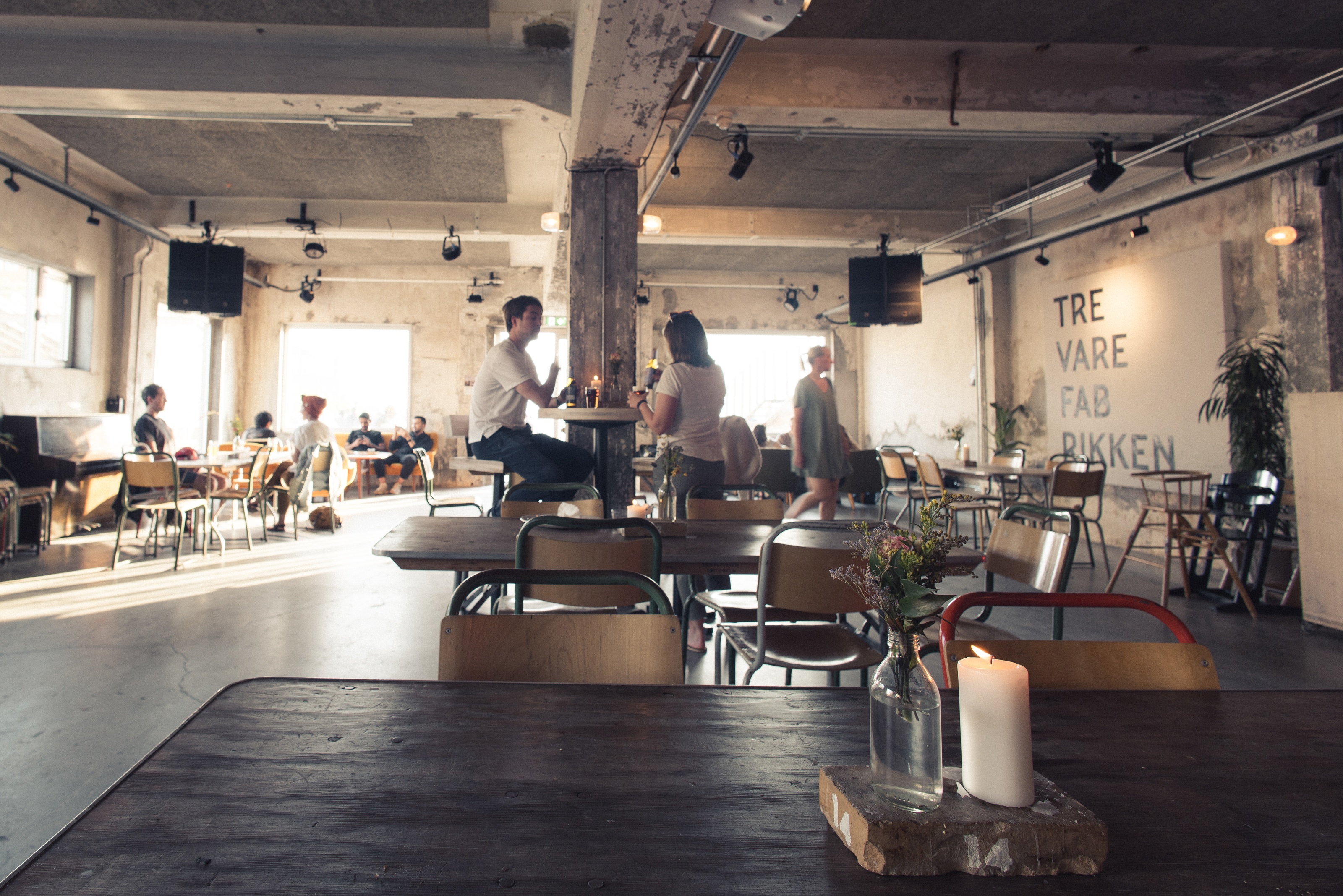
Cinnamon buns are a staple of Norway and Lofoten is no exception. They have everything from decadent, sugary fillings to lightly seasoned varieties. Each cafe has its own recipe. These are our top recommendations if you also want to chase the best cinnamon bun.
Holzwarenfabrik: Best all around bun. The building is an old cod factory that they've converted into a cafe, event space, wine bar, and sauna. I assumed one place couldn't possibly be good at all four but they proved me wrong. We went on the hottest day of our trip to find 100 cool Norwegians enjoying the good weather by the water with beer and pizzas that they also make in an outdoor oven. During the summer nights they host a series of themed events. We went on the vin and vinyl night, to give you a sense of the typical vibe.
Unstad Arctic Surf: Best gooey bun. This cafe doubles as a hotel but we just stopped by just for the pastries. The entire trip was somewhat of a detour, motivated by an incorrect Google review that they also offered campervan parking. It's located deep in a secluded valley with pastures around for miles. Great for the views and taking a dip in the water if it's warmer than the day when we visited. Is it worth the visit just for the bun? Depends how much you like cinnamon sugar.
Some other recommendations for the days when you're not braving hikes:
Lofoten Gårdsysteri - This sheep farm is starting to make a mark on the local cheese scene. They have a lovely restaurant on the farm's property, which serves coffee and cheese plates. They also host cheese making classes but. They were recording a documentary in German when we were there, complete with film crews inspecting the churning of curds. Maybe you'll just catch me in the background with a face full of brie.
Gallery Lofoten - When we were in Henningsvær, we took a stop into the art museum. All of the artwork is local, and most of the collection goes back to the late 1800s and early 1900s to showcase Lofoten before the tourists came to town. In some ways it felt like how little time has passed even though the timelines were measured in centuries not decades.
Weather
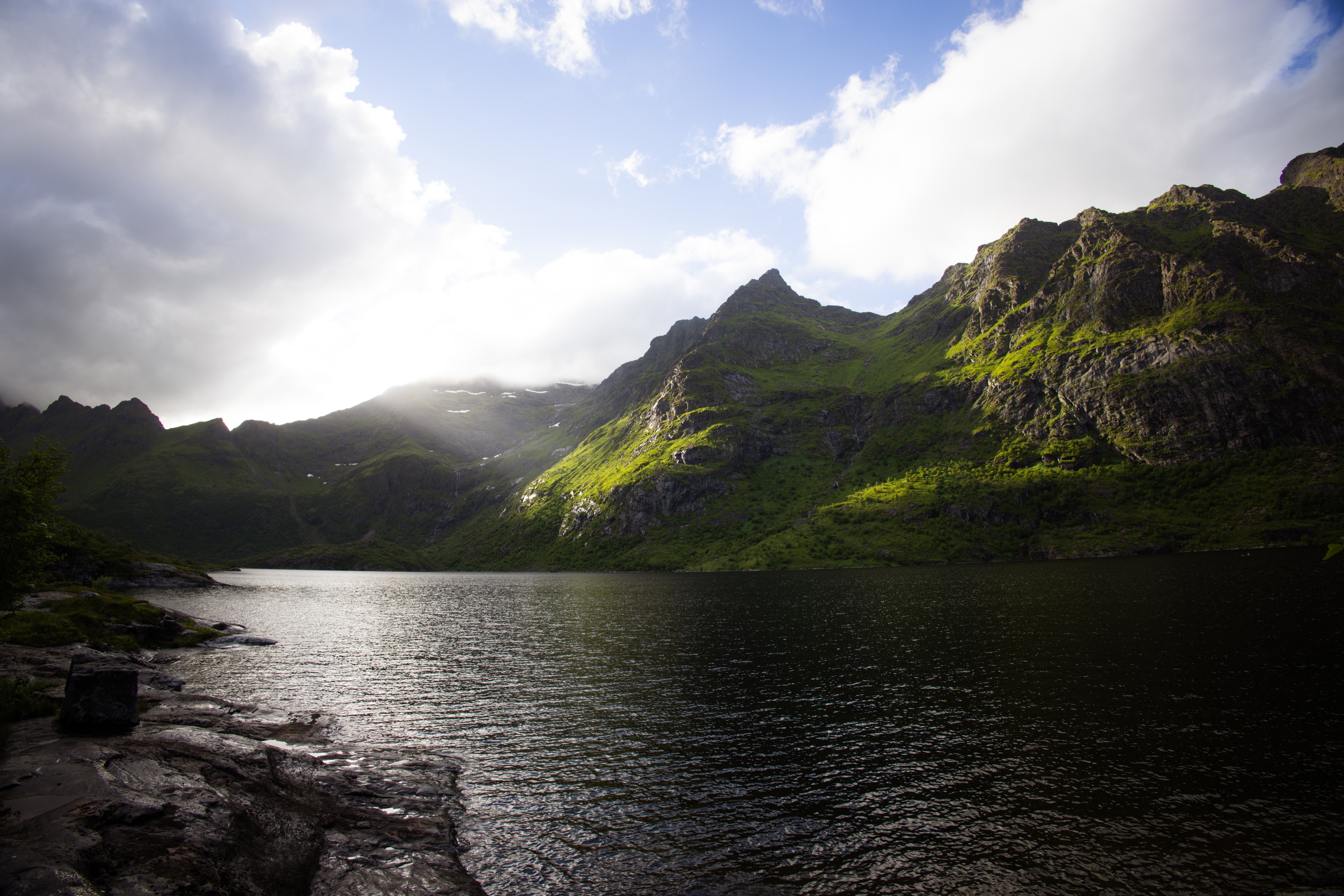
Lofoten has all extremes of weather. They also tend to happen in short proximity. We had days of freezing rain where the mountains were hidden in a thick white fog. The next day was 70 degrees, sunny, and everyone was taking off for the beach in board shorts. We also had days when it would be cloudy in the morning, pour for half an hour, and be sunny immediately after. Nothing but our damp shoes to mark the previous storm.
I suggest bringing a lot of layers. Be prepared for near freezing conditions, and for a hot summer's day. Even in the middle of summer. The weather website yr.no had the best local predictions for the local towns. We found it accurate for a window of about 3 days but more than that is rolling the dice. There are some clothing shops in the larger towns where you can buy layers in case you forget them, but much easier to pack them expecting the differentials.
We got the advice that if there's nothing but rain in the forecast during your trip, you should just cancel. I don't know if I fully agree with that suggestion - the rainiest days were cozy and a great excuse to pull out a book - but it does hold some truth. Consider rescheduling or perhaps taking a ferry to another part of Norway. If it's raining you'll be missing out on the parts of Lofoten that make it unique.
For our trip the forecast was mixed. When we landed in Evenes from San Francisco,2 we were unbelievably jet lagged. I could have slept almost anywhere, included perhaps vertically. But the sun was shining and the sea was shimmering. It was too good a day to pass up, and I'm glad we didn't. We headed to the beach to ring in the midnight sun and seize the chance that we know we had. Two rainy, gloomy days followed. We would have been so sad to have slept through the good times.
Hikes
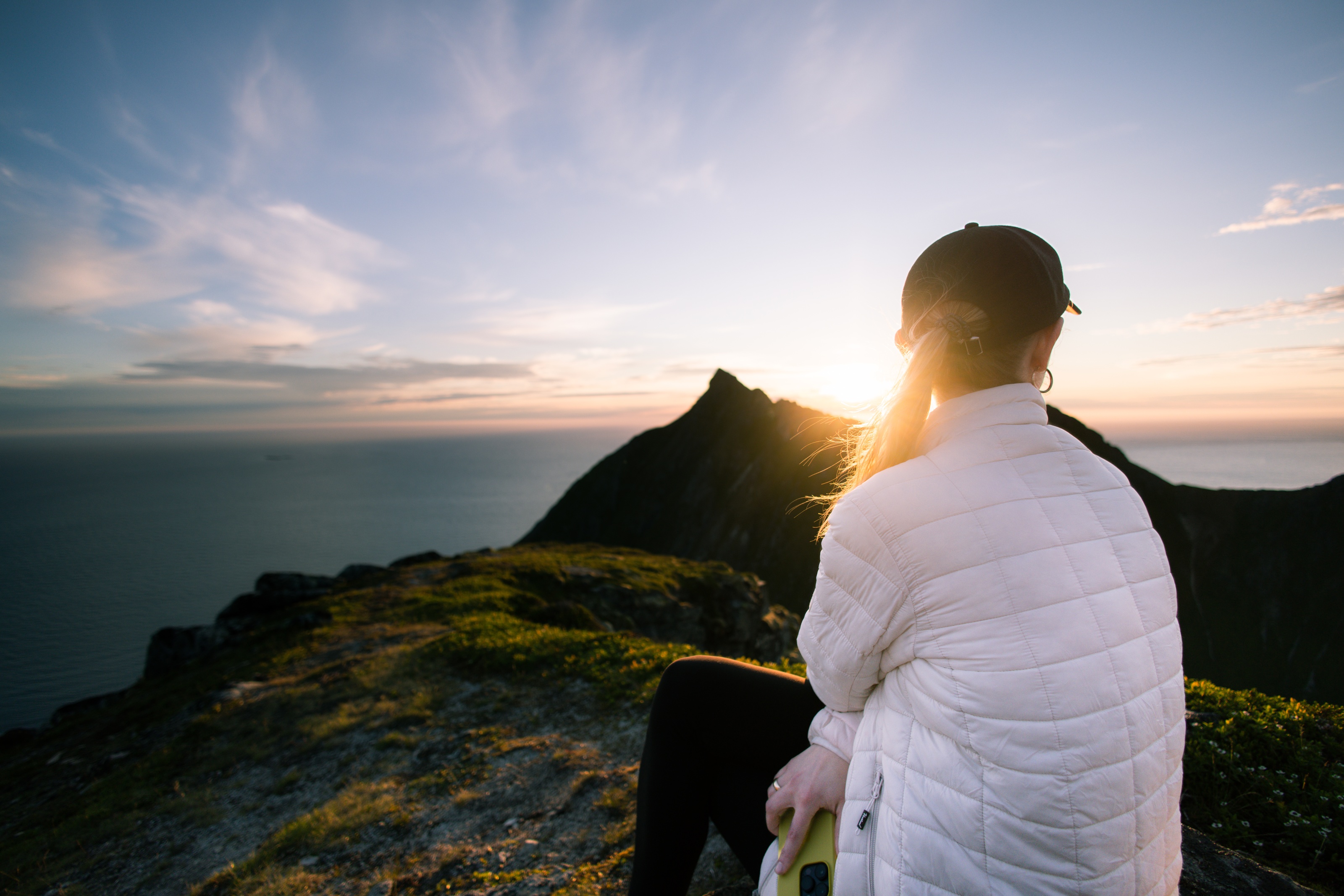
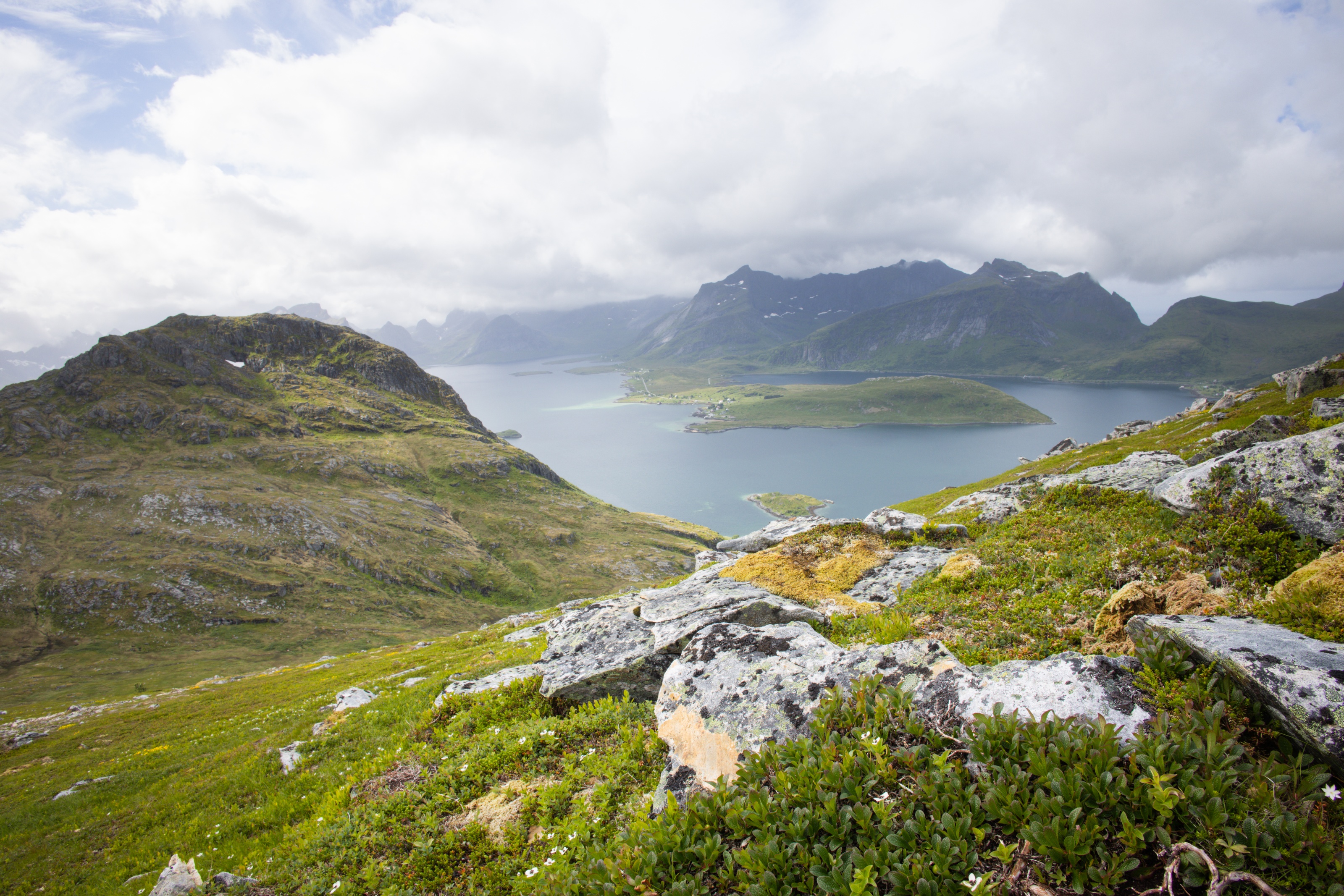
On the nice days, we went on a lot of hikes. As far as I can tell you can't go wrong with any of them. We just flipped a coin and picked the closest one to where we were. They mostly have a similar altitude (400m) although some stretch to 700-800m. The main differences are the clarity of the trail and the need for rock scrambling along the way. Most take somewhere from 2 hours to 4 hours to finish round-trip, and they're nearly all up-and-out paths. It seems loops haven't yet made it to Lofoten.
In summer's high season the popularity of a few hikes have been blown out of proportion by Instagram. Reinebringen is the main one with maybe a thousand people that make the trip each day. We skipped that one.
For every other hike we did, we were either alone or found a few scattered hikers. The wilderness in Lofoten is pure and untouched - despite the fact that you have a view of villages from almost every mountain. For the most part people seem to fully embrace the leave no trace principle of the backpacking community. Even the RV campers that haven't done a hike all week.
AllTrails coverage is pretty good on these trails - probably about 90% of the trails we did or knew about were on there. The GPS also comes in handy specifically to find the routes. A lot of trails are more like vague paths within the grasslands. Some had no path at all for stretches so you have to find your own way through the grass, bogs, and rocks. All of the hikes we did were rated as "hard" by AllTrails and "easy" by the locals. Take that for what you will when you're soliciting recommendations. Here were our favorites:
- Ytresandheia (Roren) in Flakstad
- Hustinden in Napp
- Volandstinden in Ramberg
On rainy days (or days right after rainy days) the ground is usually pretty treacherous. Either rocks are coated in water and get slippery, or the soil absorbs the bulk and you're sliding around in mud. It can turn an easy hike into a hard one and a hard one into a near impossible one. We turned back on a lake climb when we realized the path was all rain runoff and looked more like a stream than a trail. In Lofoten more than other places, if the terrain is battling you sometimes you shouldn't put up a fight.
Transportation
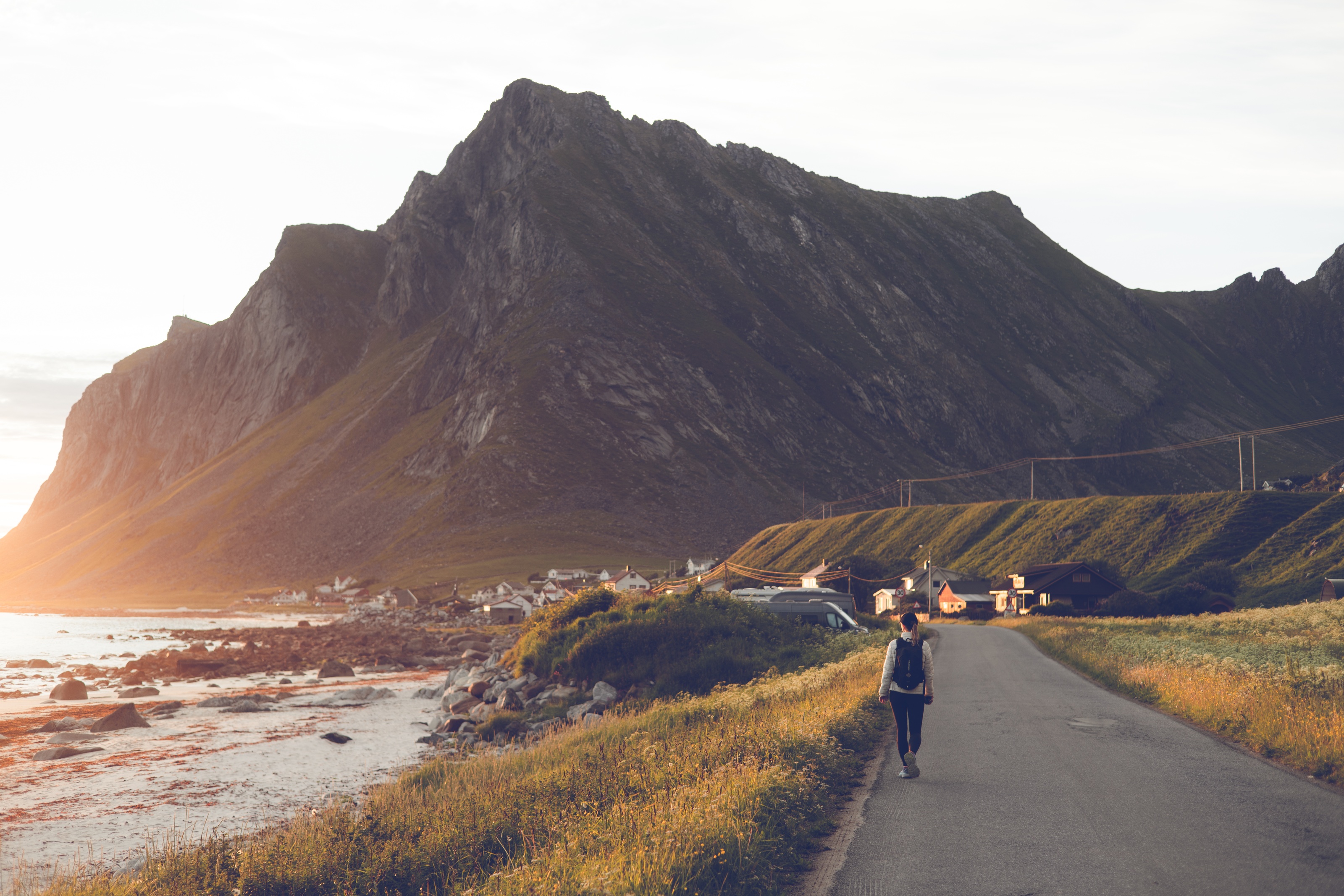
People get around Lofoten any way they can. In order of popularity, it seems RVs dominate - followed by smaller camper vans, followed by cars, followed by the local busses. For people driving around there are some proper hotel accommodations but most people camp either by tent or in their camper vans.
For the novelty and for the dollars, a camper van is hard to beat. They'll run you a little more than a local rental car but most come furnished with a pull-out bed, generator, and stove. Unless you're a car camping regular, you probably won't have those at home. I also can't imagine Air France will love you bringing a generator's lithium ion battery onboard the flight.
Most camper vans are manual transmissions. This might be the easiest place in the world to drive manual, since the roads are almost all flat and there's rarely any traffic. Ours was automatic (and required gas instead of diesel) but it sounded like only 2/20 cars in had the same build. If you're explicitly looking to avoid a manual I suggest you book early - since these can get reserved months ahead of time.
Our van was a bright orange VW from 1970. It was right out of a Beatles cover shoot. It was routinely the smallest van at our campgrounds, parked next to huge airstreams and RVs. But it had everything we needed. And you certainly learn to make the most of the space you have, which is to say, you don't have much. The bed folds out from the bench and you can unroll a mattress cover to give some padding to the wood. Some built-in blinds reduce but don't eliminate the light that streams in the windows at all hours. It has all you need without trying to be luxurious. Plus - on the nice days you don't want to be in a van anyway. And on bad days, I'd still say you don't want to be in your camper no matter how nice it is. A coffee shop is always better.
Getting around Lofoten couldn't be more straightforward. Each island is connected with a bridge network. Highway E10 is the main road that winds from the north to the south, and for the most part that's the only choice you have to make. All other roads branch off of E10 and take you the final mile. By the end of our week trip we were so intimately familiar with E10 that we could get around with landmarks alone.
M Signs pop up all over the place. These stand for Møteplass - effectively passing zones for single-lane, or near single-lane stretches of road. It seems there aren't specific legal rules for Møteplasses, but people were always very appreciative when we yielded for them coming in the opposite direction. The truth was we were really doing it for our sake. How you could fit two cars on some of these roads is beyond me.
Lofoten also has some of the craziest car tunnels I've ever seen. Snaking roads carve through towering mountains, and some uninterrupted tunnels stretch for kilometers under the rock. Naturally you also get full bars of 5G service while you're traveling through. Wouldn't want to interrupt that zoom call while you're on your way.3
Accommodations
Renting a camper van bakes in your accommodation. And the possibilities are pretty extensive. You can free-camp almost anywhere in Norway, so just pull off the side of the road overlooking the beach and get some rest. Just check to make sure there are no signs explicitly forbidding it - we saw a few next to private property where they've presumably had some issues.
We mostly opted for camping sites where there are centralized amenities. The specifics vary by the campsite but all have toilets and showers at a minimum. Most have sinks to clean empty dishes and bins to throw away trash. Some have saunas, restaurants, and cafes. Most had plenty of room when we were there but Moskenes in particular seems to be the smallest and didn't have any room when we drove down there. There's no way to reserve them ahead of time so your best bet is to call or just try your luck at a few. Having free-camping there as a fallback reduces some of the pressure on finding lodging. They usually range from $40-60 USD per night.
By the end of our week there, we settled on our favorite camp grounds that we kept coming back to. These were centrally located in the region where we did the most hiking. They're both on their own beach front, so you take a stroll from the sauna right into the water. That became a big part of our daily routine.
Lofoten Beach Camp - Great food / coffee right overlooking the water. Their breakfast waffles with brown cheese were a particular standout. We expected surfing would be more popular there based on all their advertising, but the waves were pretty small. Seems like more of a novelty than anything else. There's usually plenty of room to park especially if you don't need electricity for the evening.4
Hov - Small sauna overlooking the water. Much quieter than Beach Camp. Technically it has most of the same amenities (showers, saunas, laundry, etc) but feels less built out. Booking is done through an honor system online. They also have an active farm on the property, so it's pretty common to see people riding horses during the long sunsets. It added to the charm.
For the most part, we cooked dinner by ourselves. Most people at the campground seemed to do the same.
Other recommendations
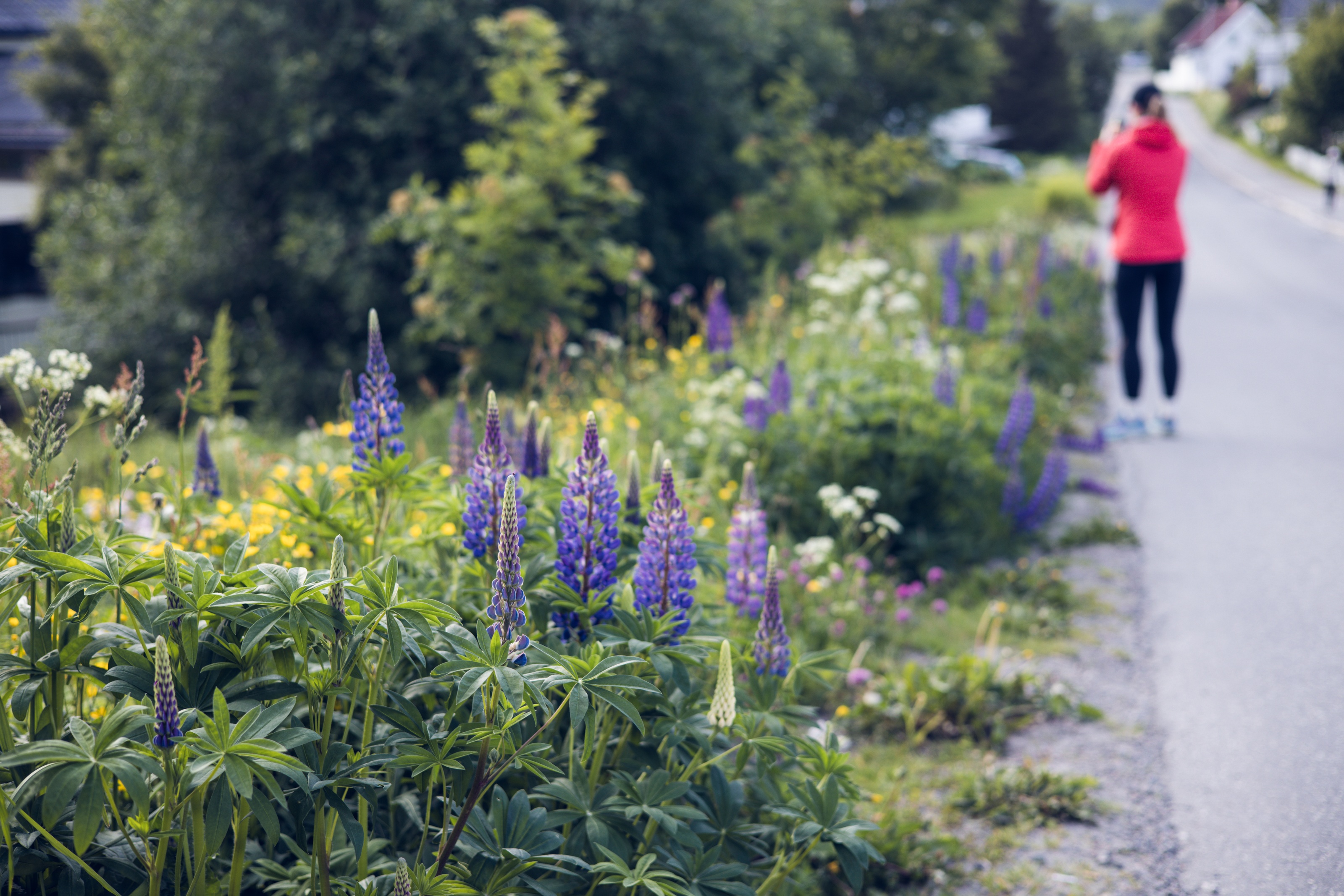
The series of guides by Cody Duncan on Lofoten formed the basis for most of our hikes. It has some context on the region and trip planning based on his experience living here, but most handy were the descriptions and ratings of hikes that he's done. Each come with photos of the views when he's hiked ults were skewed to say the leas multiple times in different seasons.
In addition to hiking, you might also consider giving fishing a try. It's such a central part of the Lofoten culture, it seems fitting that you can try your own hand at it.5 There are a lot of different companies that offer fishing trips - we picked a more local one that's hosted by the husband of a hostel owner. The boat drives out a few miles from the harbor and you cast your lines into the darkness. Børge told us a rough depth (100 feet) and otherwise pretty much left us to it.
Our group was split between a few locals, a couple Germans, and us. The results were skewed to say the least. There were four people on our boat that brought in no fewer than 20 cod. Sometimes within a minute of each other. All Norwegians. The rest of us caught a sum total of one minnow. It seems fishing is actually a skill not just dumb luck.
Conclusion

Living in Lofoten year round can't be easy. And while it's feasible with modern conveniences, it seems unfathomable thousands of years ago. The portraits of cod fisherman, rowing out to sea in the sleet and snow, show that the lifestyle hasn't much changed in the interim.
-
Don't worry, Apple's handled this edge case on the weather app. If you pull up the current time for sunset, you'll see an indicator that it's ">7 days." Maybe beyond this they'd face an integer overflow. ↢
-
No, there's not a direct flight. ↢
-
This is apparently a Norway thing as much as it is a Lofoten one. They're in the middle of a $20 billion dollar project to dig a tunnel through a section of fijords, and an underwater tunnel through some other parts. ↢
-
Since midnight hiking is so common, you'll usually find a campsite and then leave a table and chairs set up to indicate that you're headed back later. For the most part people respect that as the universal. But the Norwegian couple next to us deserve a special call-out for fending off land-grabs by people trying to take over our spot while we were out. ↢
-
Fishing's been central to Lofoten since people first settled there. And it's been especially prominent in the last 1000 years. The iconic red buildings in particular were painted that way originally because the natural paint color came from fish. ↢